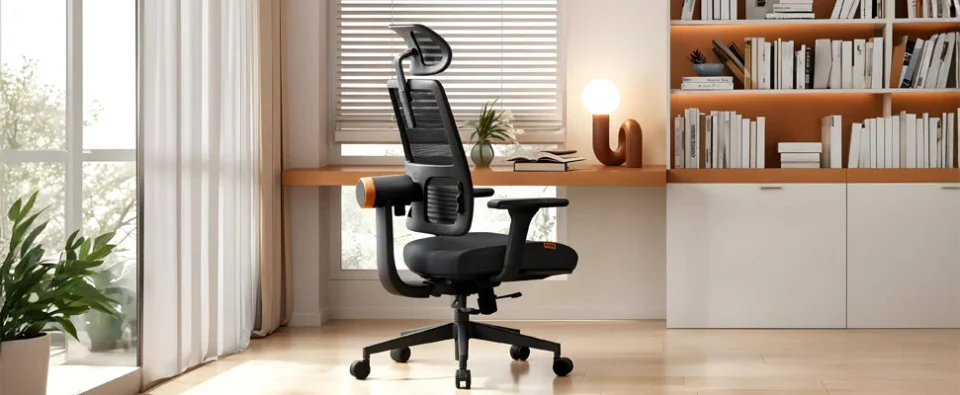A luxury ergonomic chair store Thailand offers adjustable chairs that support good posture and reduce back pain. Your posture today can affect your well‑being decades from now. Sitting for long periods with poor alignment strains muscles and joints, leading to discomfort and long‑term problems such as herniated discs, tension headaches and reduced mobility. Investing in a chair that supports good posture and adopting healthy habits can make a big difference.
Ergonomists emphasize that comfort is more important than rigid rules. The traditional “90‑90‑90” position, hips, knees and elbows at right angles, does not suit everyone. Instead, aim to maintain the natural S‑shaped curve of your spine with lumbar support and adjust your chair so that your feet rest flat on the floor or a footrest. Keep your monitor at eye level to avoid craning your neck, and place frequently used items within easy reach to reduce strain.
When setting up your workspace, consider four zones of reach described by ergonomists. The innermost zone is for objects you use constantly, like your keyboard and mouse. The next zone is for items used regularly, such as documents or a phone. The outer zones hold tools you use occasionally and items you should stand up to retrieve. Organizing your desk according to these zones minimizes awkward movements and helps maintain good posture.
In addition to proper equipment and layout, incorporate movement into your day. Sitting still for hours can reduce circulation and cause stiffness. Standing up, stretching or walking for a few minutes every half hour relieves pressure on your spine and refreshes your mind. Some people use sit‑stand desks to alternate between positions, while others set reminders on their phones to prompt movement.
Support your spine – Choose a chair with adjustable lumbar support that follows the natural curve of your lower back. When you sit, keep your hips slightly above your knees and avoid slumping or perching on the edge of the seat.
Adjust your workspace – Position your screen at or slightly below eye level and at an arm’s length away. Use a document holder to keep papers at a comfortable height. Keep your keyboard and mouse within easy reach to prevent overextension.
Take frequent breaks – Set a timer to stand up, stretch and move around every thirty minutes. Simple movements such as shoulder rolls, neck tilts and walking around the room help improve circulation and reduce muscle tension.
Choose an ergonomic chair – Invest in a high-quality chair from a specialist retailer in Thailand that offers features such as seat depth adjustment, armrests that move in multiple directions and breathable materials. A well-designed chair supports your body and encourages healthier sitting habits.
Improving your posture is an ongoing process. Pay attention to how you sit at work, in the car and at home. Incorporate core-strengthening exercises such as Pilates or yoga to build muscles that support your spine. Over time, these small adjustments can lead to better comfort, increased productivity and reduced risk of chronic pain.

